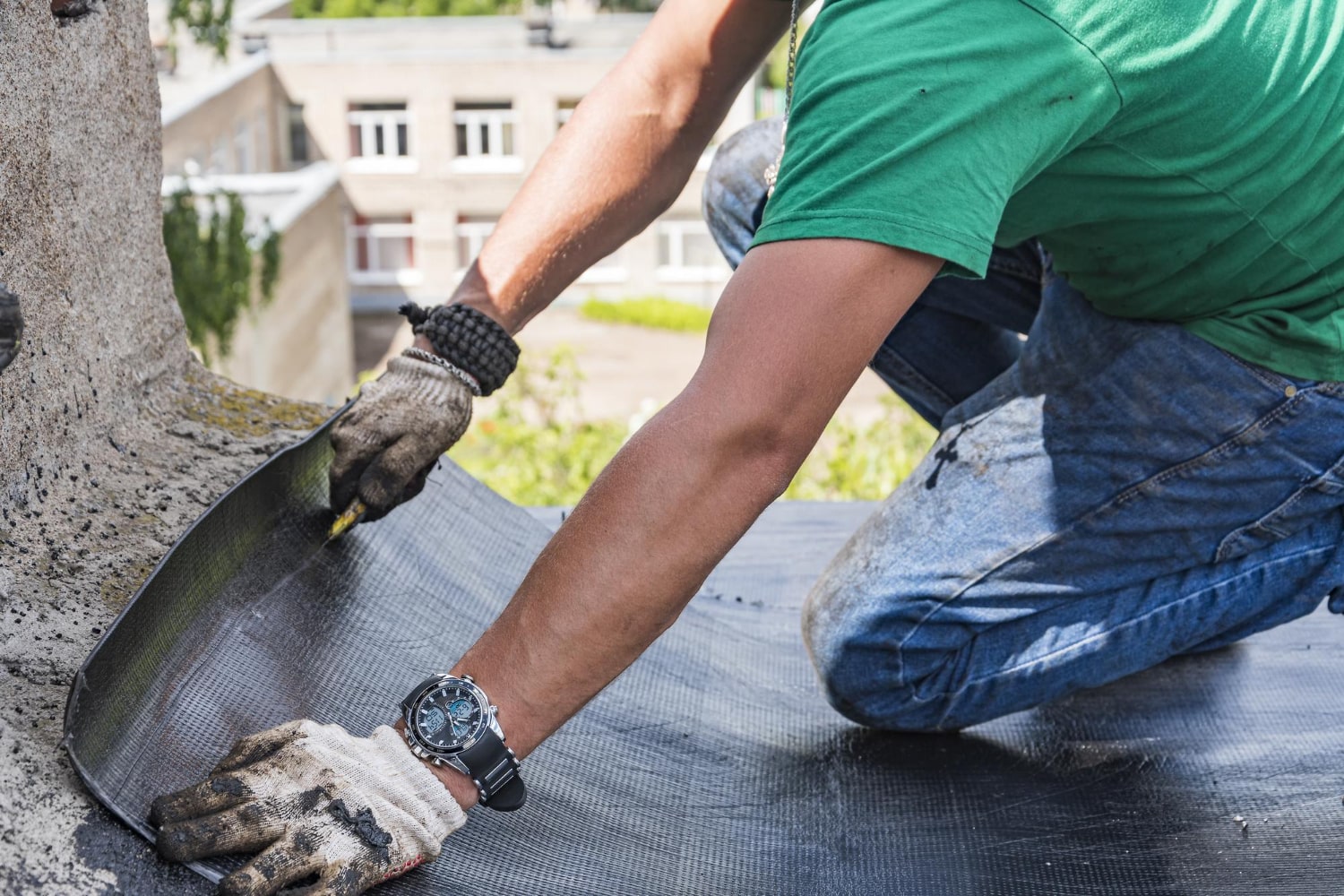We’ll tell you all about roofing felt and its many uses.
Roofing felt is vital in protecting your roof from leaks and moisture. It also provides insulation and enhances energy efficiency, making your home more comfortable and cost-effective.
Roofing felt contributes to soundproofing and noise reduction, creating a quieter living environment.
By using roofing felt, you can extend the lifespan of your roof, ensuring its durability and longevity. Let our roofing professionals guide you through the world of roofing felt and its essential role in roofing systems.
Underlayment for Roofing Materials
Our team uses roofing felt as the underlayment for our roofing materials. Roofing installation requires a solid foundation to ensure durability and longevity.
That’s where the roofing felt comes in. It serves as a protective layer between the roof deck and the final roofing material, offering an additional barrier against moisture.
It functions as a protective barrier, preventing water from infiltrating the roof deck and potentially causing structural damage. Using roofing felt as our underlayment ensures a reliable and watertight roofing system for our clients.
Protection Against Leaks and Moisture
Using roofing felt as the underlayment provides an effective barrier against leaks and moisture, ensuring our clients a reliable and watertight roofing system.
Moisture barriers play a crucial role in protecting roofs from water damage, which can lead to costly repairs and structural issues.
It establishes a protective layer that guards the roof against moisture, encompassing rain, snow, and condensation.
This barrier is significant in areas with high precipitation levels or where the climate is prone to extreme weather conditions.
By incorporating roofing felt into our roofing systems, we can provide our clients with lasting protection against leaks and moisture, ensuring the longevity and durability of their roofs.
Insulation and Energy Efficiency
Roofing felt also contributes to the insulation and energy efficiency of a roofing system by providing several benefits:
- Serving as an extra layer of thermal insulation, it minimizes heat transfer between the interior and exterior of the building. This contributes to maintaining a comfortable temperature indoors, lessening the requirement for excessive heating or cooling and ultimately conserving energy.
- Roofing felt helps to prevent air leakage, minimizing drafts and heat loss through the roof. Enhancing the overall energy efficiency of the building, this can result in cost savings over time.
- Roofing felt is cost-effective compared to other insulation materials, making it a popular choice for many homeowners and contractors.
Overall, by providing insulation benefits and cost-effectiveness, roofing felt plays a crucial role in enhancing the energy efficiency of a roofing system.
Soundproofing and Noise Reduction
One benefit of roofing felt is its ability to reduce noise and provide soundproofing in a building.
Soundproofing techniques are essential for creating a comfortable and quiet environment, especially in buildings located in noisy areas or near busy roads.
Roofing felt acts as an acoustic insulation material, reducing the transmission of sound waves through the roof structure.
It absorbs and dampens the noise, preventing it from entering the building and disturbing the occupants.
By blocking or minimizing the sound vibrations, roofing felt helps create a more peaceful and serene atmosphere indoors. Whether it is the sound of rain, wind, or traffic, roofing felt aids in reducing the noise levels and enhancing the overall acoustic performance of the building.
Enhancing the Lifespan of Your Roof
To extend the lifespan of our roof, we can take steps to ensure its durability and longevity. Preventing structural damage is crucial in maintaining the integrity of the roof.
Regular inspections and upkeep can help identify any potential issues, such as leaks, cracks, or loose shingles.
Timely repairs can thwart additional damage and prolong the lifespan of the roof. Improving the roof’s aesthetic appeal can also contribute to its longevity.
Applying a fresh coat of paint or using materials resistant to fading and discoloration can enhance the roof’s appearance while protecting it from the elements.
By taking these measures, we can improve the lifespan of our roof, ensuring it remains strong and visually appealing for years to come.



Comments are closed